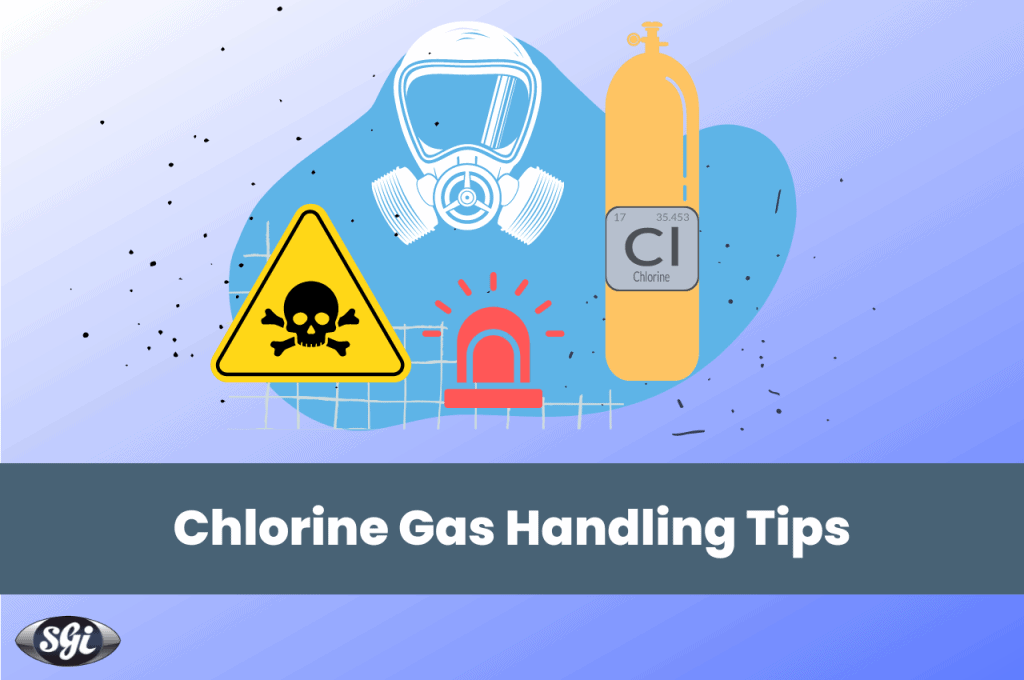
About chlorine
Chlorine is a yellow green as at room temperature with a pungent odour. Chlorine is 2.5 times denser than air. Because of its pungent odour it easily recognizable even in lower concentrations and due to its higher density, the gas tends to stay below air, near the ground.
Uses of chlorine
Chlorine is used across a variety of applications such as sanitation and disinfection of water, bleaching agent in cleaning products, manufacturing of polymers, pesticides, refrigerants and more.
Health effects of chlorine exposure
Short-term exposure to chlorine gas or liquid can cause a range of immediate health effects, including:
If you are exposed to chlorine gas or liquid, it is important to seek medical attention immediately, particularly if you experience severe symptoms such as respiratory distress or chemical burns.
Tips to handle chlorine gas safely
Here are some general tips to handle chlorine gas safely:
1. Proper Training: Before handling chlorine gas, ensure that you have received adequate training in its handling, transportation, and use. Make sure to follow all safety protocols as outlined in your training.
2. Wear Protective Gear: When working with chlorine gas, it is essential to wear appropriate personal protective equipment (PPE) such as chemical-resistant gloves, goggles, respirators, and a protective suit. When filling or changing chlorine cylinders, make sure to carry a small bottle of ammonia along with other equipment to check for probable small leaks in case of empty or defective cylinders
3. Proper Ventilation: Ensure that the area where you are working with chlorine gas is properly ventilated. Make sure to work in a well-ventilated area to prevent the buildup of toxic fumes. Take shallow breaths in the chlorine room until the possibility of a chlorine leak has been eliminated.
4. Storage: Store chlorine gas cylinders in a cool, dry, well-ventilated area, away from sources of heat and ignition. Ensure that they are stored upright and properly labeled.
5. Operating manual: The operating manual should be made available to all technicians and users designated to work with chlorine gas equipment. The operating manual must contain diagrams and detailed descriptions of the layout, equipment, use instructions, and procedures.
6. Use Only Approved Equipment: Use only equipment that is approved for use with chlorine gas and ensure that it is properly maintained and regularly inspected. For chlorine cylinder handling, do not lift the cylinder by it's hood. Do not roll, tilt, or knock a cylinder filled with chlorine. Mark and place empty and full cylinders distinctively. Always secure both empty and full cylinders to their places with a chain, cable, or clasp. Ensure the regulators and valves are certified and approved by the local authorities.
7. Visual alarm: A visual alarm must be installed around the chlorine gas storage and use area to alert personnel in case of a chlorine leak.
8. Emergency Response Plan: Develop and implement an emergency response plan in case of an accidental release or exposure to chlorine gas. Ensure that all personnel working with chlorine gas are familiar with the emergency procedures.
9. Regular Training and Refresher Courses: Keep your knowledge and skills up-to-date by attending regular training and refresher courses on the handling of chlorine gas.
Working with chlorine gas is hazardous and requires careful attention to safety procedures. Be sure to consult with a qualified professional for specific instructions and guidance on how to handle chlorine gas safely.
For regulators, valves, and accessories for all your specialty gas requirements, inquire now.